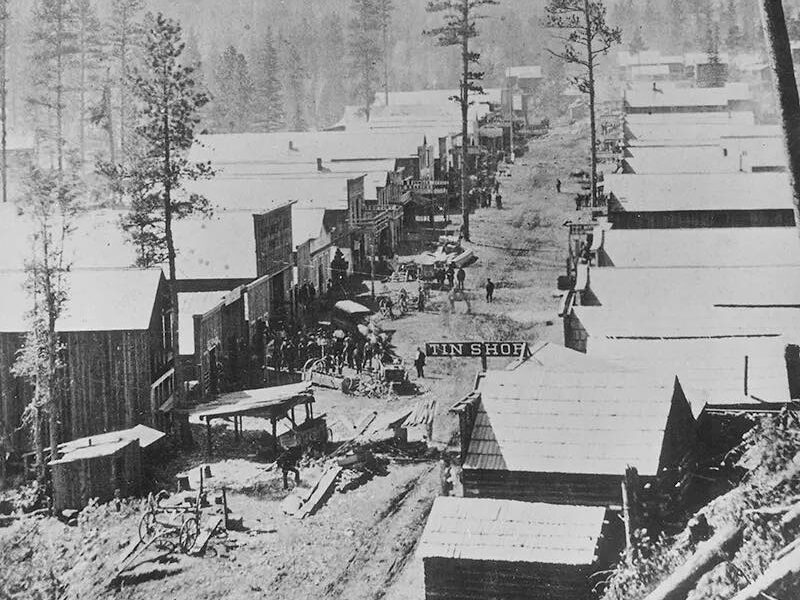The grainy photographs, taken in the late 19th century in and around the notorious gold mining town of Deadwood, provide a unique, sepia-toned glimpse of the Wild West. The images were published in American papers this week after being released by the U.S. Library of Congress.
Many of the pictures, taken by the pioneering photographer John C.H. Grabill, show how the reality was rather different to the traditions instilled by decades of Hollywood Westerns.
Between 1887 and 1892, Grabill sent 188 photographs — taken using an early technique that used albumen, or egg white, to bind together the chemicals — to the Library of Congress for copyright protection.
Deadwood in South Dakota was founded shortly after the discovery of gold in the neighbouring Black Hills in 1876.
.jpg) |
| As the railroads went further west, so the settlers followed. Grabill’s image Horse Shoe Curve in the shadow of the Buckhorn Mountains. |
.jpg) |
| Living side-by-side: A school for Indians at Pine Ridge, South Dakota. There is a small Oglala tipi camp in front the large government school buildings. |
.jpg)  |
| Happy band: Mining engineers with their wives and a couple of tame deer get together for an impromptu campside musical concert. |
.jpg) |
| Army exercise: Soldiers from Company C of the 3rd U.S. Infantry carry their rifles as they spread out near Fort Meade. |
.jpg) |
| Progress: The people of Deadwood celebrate the completion of a stretch of railroad in 1888 with a parade along the town’s Main Street. |
.jpg) |
| Peace council: The Indian chiefs who ended their war with the U.S. Army. Their names included Standing Bull, High Hawk, White Tail, Little Thunder and Lame. |
.jpg) |
| Wagon train: Oxen lead out the wagons in a photograph titled ‘Freighting in the Black Hills’ taken between Sturgis and Deadwood. |
.jpg) |
| New town: John Grabill charted how towns such as Hot Springs, South Dakota, sprung up across the Midwest as the railways grew. |
.jpg) |
| Horse hero: Comanche, the only survivor of the Custer massacre of 1876. It was a regimental order that the 7th Cavalry cared for the animal ‘as long as he shall live’. |
.jpg) |
| Ready to roll: A line of oxen and wagons along the main street in Sturgis in the Dakota Territory which was taken between 1887 and 1892. |
.jpg) |
| Striking it rich: Washing and panning for gold in Rockerville, Dakota. Three old timers named Spriggs, Lamb and Dillon are pictured in 1889. |
.jpg) |
| Modern travel: The photograph taken by John C.H Grabill in the 1880s was titled ‘The Deadwood Coach’ and shows formally dressed passengers both on top and inside. |
.jpg) |
| Indian camp: Titled Villa of Brule, this was the home of the Lakota (Sioux) tribe pictured in 1891 near the Pine Ridge reservation with the White Clay Creek watering hole |
.jpg) |
| Braves: A portrait of a band of Big Foots (Miniconjou) at a Grass Dance on the Cheyenne River, watched by soldiers from the 8th U.S. Cavalry and 3rd Infantry. |
